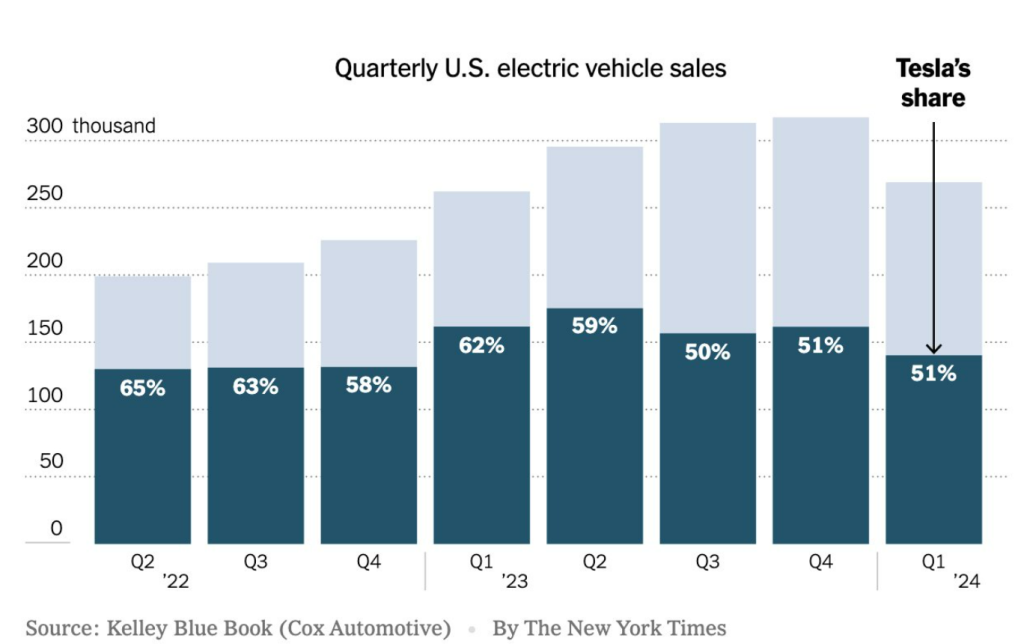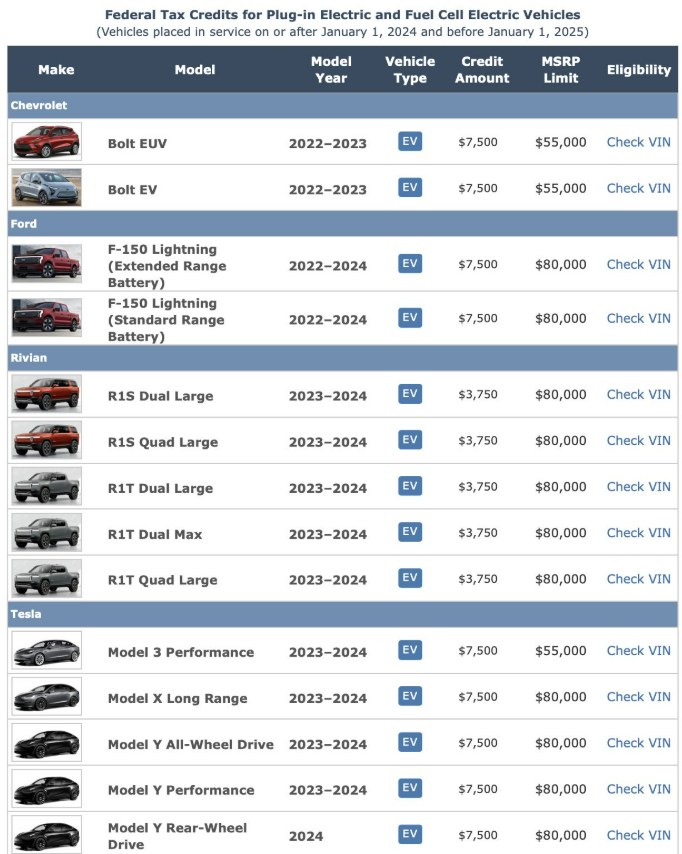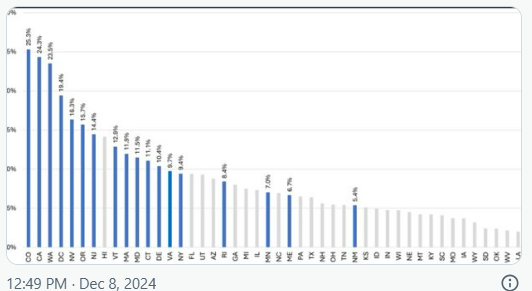Two sources detail the challenges of the mandated transition to electric vehicles (EVs) in the United States. The first source, a meta-study, highlights the high costs, limited range, inadequate charging infrastructure, and potential strain on the power grid associated with widespread EV adoption. The second source supports this by citing declining EV sales, consumer dissatisfaction among current EV owners, and scaled-back EV production plans from major automakers. Both sources argue that government coercion is driving this transition despite a lack of consumer demand, and that focusing on consumer choice and market forces would be more effective. Ultimately, both sources advocate for a less government-centric approach to EV adoption.
Listen to the convo or see below for much more….
Incentives absolutely DO matter for EV sales.
Colorado recently passed CA for EV sales as a percentage of new car sales (25.3% for CO vs 24.3% for CA).
UT is similar to CO and has only 9% EV sales.
CO has a state-level EV incentive of $5k in addition to $7500 IRA tax credit. pic.twitter.com/Qr6Uxicdpe— Jacob Larsen 🇺🇸 🇩🇰 🇺🇦 (@SLCPaladin) December 8, 2024
Despite massive subsidies and favoritism, EV sales dropped in Q1 of 2024 compared the previous quarter. Economics be damned, EPA recently announced pollution standards that require car makers to sell >50% EVs by 2032.

NEWS: The IRS has released the full list of vehicles that are eligible for the Fed EV tax rebate in 2024. The number of eligible EVs in 2024 has dropped 50% vs 2023. Only 7 models currently qualify. Full list: • Rivian R1S & R1T: $3,750 • Chevy Bolt EV & EUV: $7,500 • Ford F-150 Lightning: 7,500 • Tesla Model 3P, all Model Y trims & Model X LR: $7,500

Ford makes about 5% on every passenger car, 15% on work trucks, and loses 150% on every EV. If joe wasn’t forcing transition to EVs, both Ford and GM would exit the business, their cars would cost less, and earnings would be higher. climate change™ is a major inflation driver. – Frog Capital
Briefing Document: EV Adoption in the U.S. – Consumer Concerns and Policy Implications
Central Theme: This briefing document examines the challenges and criticisms surrounding the push for widespread Electric Vehicle (EV) adoption in the U.S., highlighting consumer reluctance and potential economic and infrastructural burdens.
Key Sources:
- “‘A Lot Of Government Coercion’: Study Slams ‘Forced Transition’ To EVs Consumers Don’t Seem To Want,” Daily Caller News Foundation
- “Americans are rejecting EVs despite government meddling,” Washington Times
Main Points:
1. Consumer Resistance to EVs:
- Both sources highlight consumer hesitancy towards EVs, despite government efforts to promote them through subsidies and mandates.
- A McKinsey & Co. survey reveals a significant portion of EV owners are considering switching back to gasoline or diesel vehicles. Similarly, a Gallup poll shows a decline in Americans considering EV purchase.
- Quote: “[F]ewer Americans — 35%, down from 43% in 2023 — say they might consider buying an EV in the future…” (Source 2)
2. Cost and Practical Concerns:
- The IER study (Source 1) identifies cost as a major barrier, with EVs costing significantly more than comparable gas-powered vehicles, even with tax credits.
- Quote: “The price of an average EV in the first quarter of 2024 was $53,048, compared to just $35,722 for conventional vehicles…” (Source 1)
- High depreciation rates, driven by expensive battery replacements, also deter buyers.
- “Range anxiety” and limited charging infrastructure contribute to consumer reluctance. Source 2 notes the challenges of long-distance travel and the poor performance of EV batteries in cold climates.
3. Potential Economic and Infrastructural Challenges:
- Source 1 warns that a rapid transition to EVs could strain the already burdened U.S. power grid, especially with rising electricity demand from other sectors like data centers and AI.
- Quote: “Now you’re suddenly talking about not having enough electricity to supply everyday use at the same time we are trying to force pre-existing transportation systems to run on electricity.” (Source 1)
- The IER study also questions the environmental benefits of EVs, pointing to high emissions from tire wear due to heavier vehicles and the environmental impact of mining for battery materials.
4. Market Signals and Policy Implications:
- Source 2 observes major auto manufacturers scaling back their EV plans and rental companies like Hertz selling off their EV fleets due to inefficacy. These actions suggest a disconnect between government policy and market realities.
- Both sources advocate for a market-driven approach to innovation, allowing consumer demand and technological advancements to guide the transition rather than government mandates.
5. Political Divide:
- Source 2 highlights the political debate around EVs, with former President Trump opposing mandates and advocating for consumer choice, reflecting a divide in political perspectives on the best path forward.
Conclusion:
While the transition to electric vehicles is presented as a key solution to combat climate change and reduce reliance on fossil fuels, the sources analyzed reveal significant consumer resistance, practical limitations, and potential economic and infrastructural challenges. A more nuanced approach is needed, prioritizing consumer needs, market signals, and technological advancements to ensure a sustainable and equitable transition to a cleaner transportation future.









Add comment